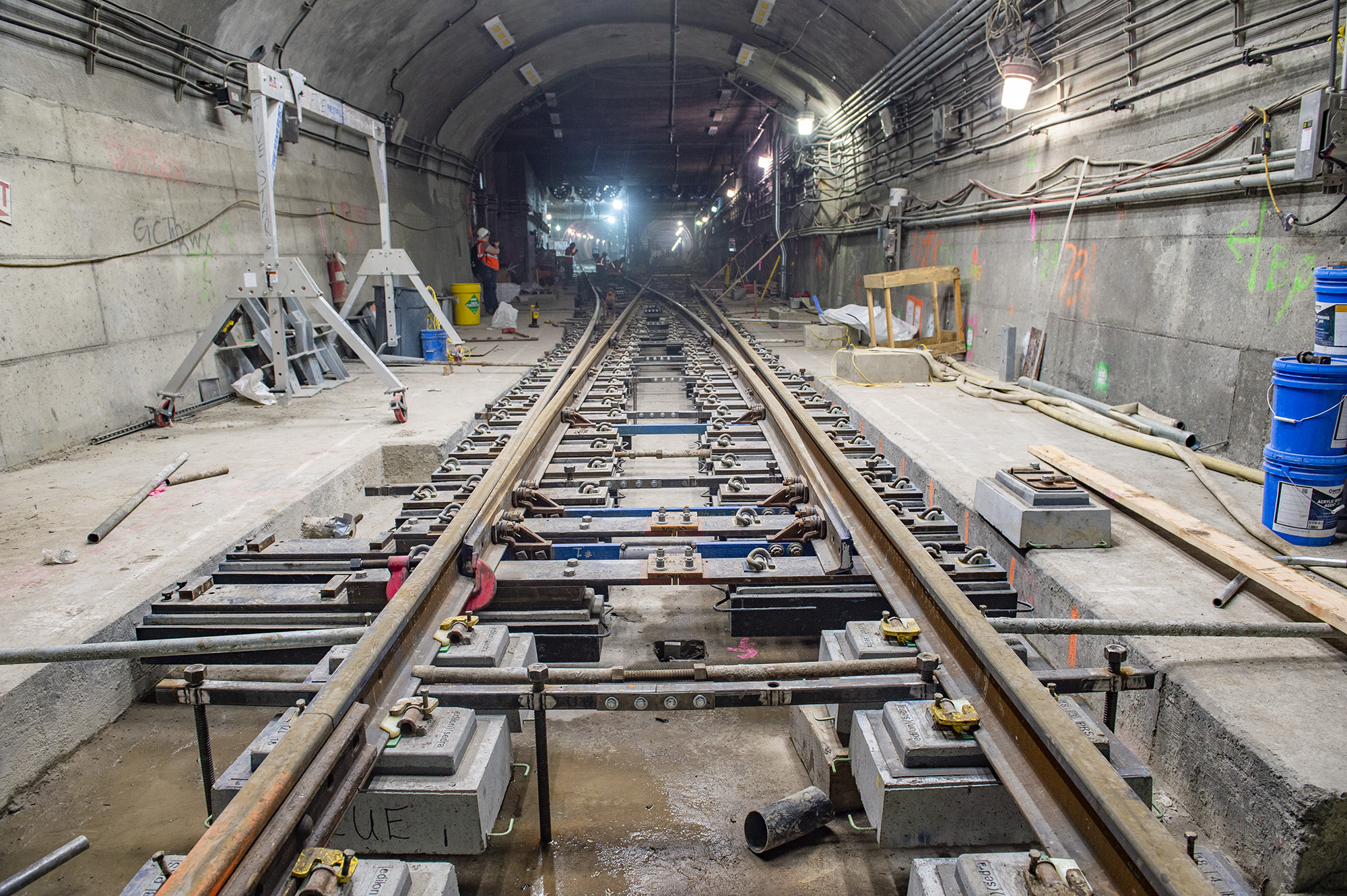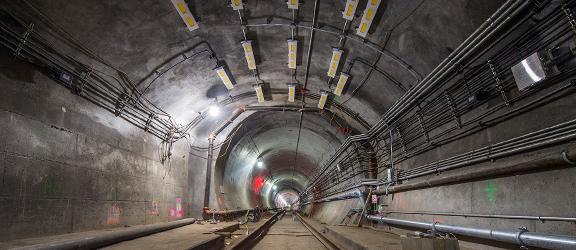
One of the tunnels to GCT with track and utilities installed.
courtesy: amodernli.com
|
As small groups of Long Island Rail Road employees don protective gear for guided tours of East Side Access progress, the reaction is usually the same – amazement. They are witness to an unprecedented transformational change where the past will soon meet the future in a multi-level, state-of-the-art hub that will serve commuters from New York City, Long Island, Westchester and beyond.
East Side Access, one of the largest transportation infrastructure projects currently underway in the United States, will provide direct LIRR service into a new concourse below Grand Central Terminal on Manhattan’s East Side, reducing commutes into Manhattan by nearly 40 minutes. The project spans work in multiple locations throughout Manhattan, Queens and the Bronx and includes more than eleven miles of tunneling.
East Side Access is an integral component of the broader LIRR system expansion initiative to help reduce passenger crowding, train congestion and automobile traffic as well as provide connections with additional regional transportation options such as Metro North Railroad and the New York City Transit subway system. Passengers traveling from Midtown East will enjoy easier access to JFK International Airport via the AirTrain at LIRR’s Jamaica Station.
When completed, East Side Access is expected to serve approximately 162,000 customers a day, providing a faster and easier commute from Long Island and Queens to the east side of Manhattan in a new eight-track terminal and concourse below Grand Central Terminal.
Back to top
|








